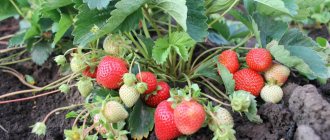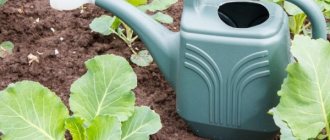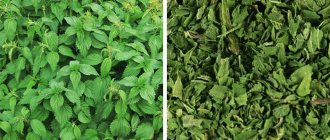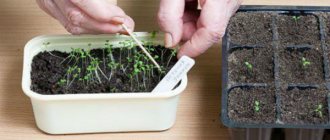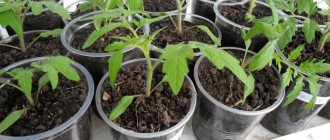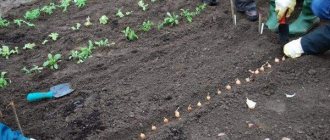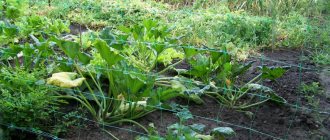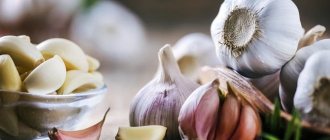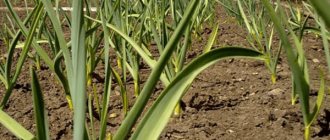Feeding with ash.
Ash has long been used by gardeners as a cheap fertilizer to feed plants. It not only improves the mechanical and chemical composition of the soil. Being an organic fertilizer, ash can successfully replace mineral fertilizers - phosphorus and potassium. After being introduced into the ground, it continues to have a beneficial effect on growing crops for many years.
But ash is different from ash. When burning household waste, ash is also produced, but in no case should it be used to fertilize the garden. When paint, packaging film and other polymers burn, many substances that are harmful and even dangerous to humans are formed, which pollute the soil and can be absorbed by plants. A big mistake is made by those who believe that the ashes and coals of any fire can be poured under garden crops.
Unlike mineral fertilizer, ash fertilizer contains all the elements in the form in which they have already been absorbed by plants. Their composition varies depending on the origin of the burnt mass.
Ash contains the most potassium compounds, so sandy soils are most responsive to its application. In addition to potassium and phosphorus, the ash contains boron, molybdenum, copper and manganese.
As mentioned above, the composition of ash depends on the plants from the combustion of which it was obtained. Calcium is found most in the ash from deciduous wood, phosphorus - in the ash from bark, straw and potato tops, and potassium - from dry meadow grass. The only element that is not in ash is nitrogen.
One of the advantages of ash is the absence of chlorine, which is part of many mineral fertilizers. Thanks to this feature, you can safely feed crops such as strawberries, currants, potatoes, raspberries, grapes, which have a very negative attitude towards this element.
But when using ash to feed plants, one should not forget that this substance is a caustic alkali, which not only compensates for excess acidity, but also destroys all living things in high concentrations. Soil bacteria, earthworms and other beneficial representatives of soil fauna find it difficult to tolerate the ingress of ash into their habitat. Large amounts of this fertilizer have a detrimental effect on them, and population recovery is difficult and very slow.
When adding ash, you must be careful - be sure to protect yourself from blowing small particles into your eyes or respiratory organs.
Ash should not be added to soil that is alkaline - the absorption of nutrients by plants may be difficult. Acidophilic plants, that is, lovers of acidic soil, also cannot tolerate it: azalea, blueberry, rhododendron, cranberry, camellia and some others.
Ash should not be used together with nitrogen fertilizers - ammonium sulfate, urea, ammonium nitrate or manure. Mixing with them, it neutralizes their effect on plants. Nitrogen can be added no earlier than a month after applying the ash.
All pumpkins, cabbage, tomatoes and cucumbers respond well to fertilizing with ash. Loves ash and beets. Reddened and growing poorly in acidic soil, it can simply be sprinkled with ash or watered with an ash solution.
For cucumbers and zucchini, you can add one glass of ash per square meter, embedding it in the soil and always watering it. In the same proportion it is used to feed parsley, carrots and radishes.
For onions and garlic, it is recommended to alternate fertilizing with ash with infusions of mullein and bird droppings, you just need to make sure that enough time passes between them.
Ash stimulates the formation of ovaries on tomatoes, rapid growth and ripening of fruits. You can simply scatter it on the ground around the plant, or dilute a teaspoon in a liter of water and leave for a week.
Cherries and plums are fed with ash once every three years. A groove is made around the trunk, no more than 15 cm deep, and ash is poured into it, or a solution is poured in. After this, the groove is leveled. About 100 g of ash is consumed for each adult tree.
Currants are also responsive to ash fertilizing - they are simply watered at the root with an ash solution.
It’s not at all difficult to prepare an ash solution: you need to dilute a glass of ash in a bucket of water. Shake it before adding. An ash decoction for foliar treatment will take a little more time: sift about 300 g of ash and pour boiling water over it, boil for 25 minutes. After filtering, dilute the resulting broth with ten liters of water. You can add 50 g of soap for better adhesion.
Ash decoction is used not only as a top dressing, but also for pest control. It helps very well to fight aphids and flea beetles on cruciferous crops. Radishes and cabbage can be additionally simply powdered with ash. Wireworms and nematodes die from the ash, and slugs and snails are very afraid of it.
Ash is a fertilizer that does not have an expiration date. Store the ash in tightly closed containers, making sure that no water gets into it, which washes out the nutrients.
indasad.ru
Disadvantages of using this type of fertilizer
(adsbygoogle = window.adsbygoogle || []).push({});
If we talk about the disadvantages of using such fertilizer, we should remember that ash contains caustic alkali, which, if the concentration is exceeded, can adversely affect the soil microflora, killing beneficial bacteria in the soil, earthworms and other beneficial soil fauna. That is why it is necessary to use such fertilizer as carefully as possible, taking into account the maximum permissible rates for applying this fertilizer.
Did you know. Using wood ash to fertilize beds will improve garlic yields by a third.
Fertilizing garlic.
Garlic is not a very picky plant, but it requires some attention. To obtain a good harvest, pre-planting fertilizer alone is usually not enough. They replenish the resulting nutrient deficiency with the help of fertilizers, which for this crop can be both mineral and organic.
Mineral supplements for garlic
The easiest way is to use a special complex fertilizer for onions and garlic with a percentage ratio of nitrogen, phosphorus and potassium of 7.6:15.3:35.1. It can be used on any soil, both in open and protected ground. The abstract promises good growth, increased resistance to adverse weather conditions, as well as resistance to pests and diseases. In addition, it accelerates ripening and improves taste.
It is recommended to fertilize summer garlic once or twice during the growing season, using 5 to 10 grams per square meter. Fertilizer must be added to the soil after rain or watering, evenly scattered around the plants, followed by incorporation. Winter garlic is fed in early spring, as soon as sprouts appear. Take from 10 to 20 grams of the mixture for each square. meter of garlic bed.
The same fertilizer can also be used in liquid form, for which you can dissolve one tablespoon of the dry mixture in a bucket of water. For one sq. A meter of garlic planting requires no more than three liters of solution.
Instead of complex fertilizer, for the first feeding of winter garlic, you can use urea - a tablespoon dissolved in a bucket of water. One bucket is enough for 5 square meters. meters of beds. The second feeding, in this case, is done with nitrophoska - two tablespoons per bucket, two weeks after the first.
For better formation of heads, it is often recommended to do a third feeding - with superphosphate. It is carried out at the end of June, using two tablespoons per bucket and pouring two liters of solution per square meter. meter.
Organic feeding
For winter garlic, a good fertilizing solution would be a mullein solution made at a ratio of 1:7. Garlic beds are watered with this mixture as soon as the snow melts and the first shoots appear.
Like all onions, garlic loves ash. To add it, you can rake out the top layer of soil around the stems once or twice during the summer and, after filling in the ash, level it back.
Experienced gardeners often advise feeding garlic with diluted chicken manure. Fresh litter must be thoroughly mixed in water at a rate of 1:15. It is better to put it into use immediately, without insisting, in order to avoid nitrogen losses. Plants are watered using a watering can, directly from the spout, without a sprayer, trying not to get it on the leaves. But such fertilizing must be used very carefully - the slightest overdose can lead to leaf burns and other sad consequences. We must not forget that garlic after droppings becomes softer in consistency and is stored worse.
Foliar feeding
Foliar feeding of garlic is especially effective in cold and rainy weather, when the absorption of nutrients from the soil is difficult. Or in cases of shortage of any individual elements detected in the middle of the growing season.
Green leaves accept fertilizer solutions offered to them several times faster than roots. Therefore, it is not surprising that the results of their use are visible much earlier. Gardeners quite rarely use this type of feeding on onion plants, believing that their tops are too small. Meanwhile, foliar feeding is a kind of “first aid” for garden plants, and garlic responds to it no worse than beets or carrots.
To spray garlic, you can use the same mineral fertilizers and mixtures as for traditional root feeding. Only the concentration needs to be reduced by two or three times. The last remark is very important - too strong solutions can do more harm to the future harvest than good. Burns from excessive amounts of chemicals are difficult for garlic to tolerate and can lead to yellowing of the foliage and even death of the entire plant.
It is better to spray early in the morning or in the evening, before sunset, so that the solutions are absorbed into the leaves and do not dry out. Naturally, after treatment there should be no rain or dew for at least two hours. In cloudy and windless weather, foliar feeding can be done at any time of the day.
What to remember when choosing fertilizer
1. Garlic does not tolerate fresh manure at all, which is not suitable for feeding it.
2. It is always better to slightly underfeed garlic than to overfeed. Much and useful, in relation to fertilizers, are not always the same thing.
3. All fertilizing must be done in a timely manner, otherwise they will have a greater effect not on the formation of garlic bulbs, but on the growth of leaves and arrows.
indasad.ru
Basic fertilizers for garlic
Fertilizers play a major role when planting garlic . The crop urgently needs nutrients for growth.
The following types of feeding are distinguished::
- Dolomite flour or lime. It is applied to the soil to reduce acidity. The dosage depends on the degree of acidity of the soil. In some cases, wood ash can be used.
- Organic fertilizers. The best option is compost with manure and bird droppings. Compost is beneficial for its content of digestible nitrogen, potassium, sulfur, phosphorus and microelements.
- Mineral fertilizers. The leader in this group is superphosphate. Wood ash can be used as the most affordable mineral fertilizer.
- Sulfur. This element is vital for the development and growth of garlic.
It can be useful:
How to plant garlic before winter
Planting garlic bulbs before winter
Secrets of caring for winter garlic in spring
Selection of predecessors
By following the rules of crop rotation, you can achieve increased productivity .
The plant has a shallow root system, so it takes the substances necessary for development from the top layer of soil. It is productive to use soil after plants with a long root system. The best predecessors are squash and zucchini, while green manures are clover and alfalfa. A good predecessor would be a berry bush. A good option is the soil after tomatoes, cucumbers, peppers, cabbage and pumpkins.
You cannot plant garlic after onions , as these plants are attacked by the same pests.
It is not recommended to plant garlic near a bed of beans, peas or cabbage . These crops do not tolerate the proximity of garlic - it interferes with their growth and development.
Attention! If there is not enough space in your summer cottage, you can find a way out by adding garlic to strawberries, cucumbers, currants, and raspberries.
The best fertilizers for garlic in the fall. Planting garlic in the fall: timing
It is reliably known that garlic was grown even in ancient Egypt; this fact makes this vegetable the patriarch of cultural vegetable growing. Depending on the timing of planting, garlic is divided into spring and winter - that which is planted in the fall, “before winter”. It is this garlic that is most popular, as it ripens a couple of weeks earlier and has increased shelf life; with proper storage, the winter harvest can be saved until next winter.
Winter garlic
The entire variety of varieties can be divided into 2 groups: bolting and non-shooting. Of the former, the most popular varieties are Promin, Spas, Duchess, Prometheus, Zubrenok, etc., and of the latter, Gribovsky Yubileiny, Dubovsky, Gribovsky 60, Aleysky. If you are in doubt what species this or that variety belongs to, look carefully at the head: the bolting one has from 5 to 12 large cloves arranged in one circle, and the non-shooting one has 14-30 small cloves arranged in a spiral. Planting garlic in the fall is good for non-shooting winter varieties. Fertilizers applied to the soil depend not only on the variety and type of soil, but also on the timing of planting.
Optimal planting dates
Planting garlic in the fall gives the best results. Planting dates may vary slightly depending on weather conditions, but experienced gardeners advise planting garlic between September 30 and October 20. Of course, if the autumn turned out to be warm and sunny, the planting dates can be shifted a little, but you should remember that the garlic must be well strengthened before frost, but not have time to germinate much, otherwise the entire crop may die. The optimal t˚C should be at least 13-15˚C. At this temperature, planting garlic in the fall, fertilizing the soil and other work on the site will bring not only pleasure, but also a good harvest.
Before planting, it is necessary to prepare the site, remove weeds and apply the necessary fertilizing. It is quite difficult to say which fertilizer is best for garlic. It all depends on the quality of the soil on your site.
Preparing the ground
If your site has sandy loam soil, you are lucky - this crop loves it very much.
Fertilizers for garlic are applied in the fall two weeks before planting; to do this, you need to dig the bed to a depth of about 20 cm and add humus of about 5-6 kg/m2. Please note that fresh manure cannot be used in this case. If the soil on your site is clayey, then you need to add peat in the amount of 1 bucket/m2. As a fertilizer for garlic in the fall, potassium salt is also added to the soil - 20 g/m2 and superphosphate - 30 g per m2. And chalk, fluffy lime or dolomite flour are also added to loamy soil. But you shouldn’t use nitrogen fertilizers, they provoke the growth of the green mass of the plant, and for garlic the most important thing is the root part.
How to properly place garlic in the garden
You should not start planting the crop immediately, but about a week after applying the fertilizer. For garlic in the fall, it is very important to follow the planting rules, since watering at this time of year is very limited and the cloves may not take root well.
The most common way to plant garlic is in beds made with a hoe, but you can do it another way - make a hole for planting each clove. To do this, you need to take a metal tube or peg and push holes to the required depth.
When you use large cloves for planting, the holes should be 7 cm deep, and if the planting material is not too large, then 4-5 cm. Just before planting, pour a little wood ash into the hole - this will provide feeding for your garlic until spring.
Whatever planting method you choose, remember that the rows need to be placed at a distance of at least 25 cm from each other, and the spaces between the cloves should be about 7-10 cm wide in the palm of your hand. Do not press the cloves themselves too much - you can damage the bottom and they will not take root well, it is better to simply “put” them at the required depth and carefully cover them with soil.
Do I need to cook garlic and how to do it?
The day before planting, the garlic heads should be disassembled into cloves; you should not do this earlier - the cloves can dry out greatly and partially lose their properties. Also, you should not peel the skin from the cloves, because some fertilizers for garlic are applied directly into the hole in the fall, and the seed may “burn.”
Select the strongest and largest cloves for planting; small ones weighing less than 3 g will not yield a good harvest. Please note that if the entire head consists of two or three cloves, then it is not suitable for planting - it is degenerate material and there will be no harvest.
For better rooting, you can soak the culture in a solution of ordinary salt - 1 tbsp/2 l of water, and then in a weak solution of potassium permanganate. This will protect the seedlings from many diseases. For the same purposes, you can use copper sulfate, a 1% solution, or use ready-made preparations. “Fitosporin”, “Barrier”, “Immunocytophyte”, “Barrier” are suitable.
Fertilizers for garlic in autumn and spring: when, where and how much
Autumn fertilization practically ends before planting garlic and is limited to preparing the soil layer.
After planting, it is recommended to mulch the beds with dead grass, sawdust or plant tops. This will help retain moisture longer and protect the plant from severe frosts. In early spring, as soon as the first shoots hatch, the garlic needs to be fed with a urea solution at the rate of 1 tbsp. l/10l of water. For one sq. meter should take about five liters.
A little later, in April, fertilizing should be done twice more. The first time, use a solution of chicken manure and nitroammophoska, the first you need to take 0.5 l, and the second - 1 tbsp. spoon. Mix all this in 10 liters of water. And at the end of the month, use a slightly different composition: for 10 liters of water you will need 1 tsp. urea, 1 tbsp. l. potassium sulfate and double superphosphate.
One of the main secrets of a good harvest is foliar feeding of garlic. It differs from the usual one in that fertilizers are not poured under the roots, but sprayed from above. This is done most often when the feathers begin to turn yellow. For foliar fertilizer, ammonium nitrate or urea is used; the concentration of the solution should be much less than usual. It is necessary to carry out foliar feeding only in the evening, in cloudy weather, otherwise you can “burn” the green mass.
Garlic loves crumbly soil and a complete absence of weeds, so the next day after applying fertilizer or watering, the soil must be loosened. By the way, if the weather is not too rainy, then the beds need to be watered abundantly - this crop loves water. However, do not overdo it - overwatering is just as harmful as drought.
Harvesting
Garlic can be harvested when a couple of lower leaves have turned yellow or dried out.
The bulbs are pulled out and, together with the leaves, laid out on beds or hung in bunches in a dry, ventilated room. As the stems dry, the nutrients from them move into the bulb. Garlic is considered ready for storage when it begins to rustle in your hands. It is tied into braids or, after cutting off dry foliage, placed in linen bags for subsequent storage. fb.ru
Ash as a fertilizer - how to use organic matter?
Wood ash as a fertilizer - what are the advantages?
First of all, ash is a natural product formed after burning wood, and therefore you can get it almost free of charge. Its second advantage follows from the first - the use of ash will be safe both for the plants themselves and for people , since “chemicals” will not accumulate in fruits and berries.
- Fertilizing grapes with ash
- Feeding potatoes during planting
- Fertilizing with wood ash
We recommend that you read
The third advantage of ash is that it can make plants stronger and reduces their susceptibility to diseases.
There are two fertilizing methods:
- The dry mixture is poured into a trench around the perimeter of the tree to a depth of about 15 cm, after which it is immediately covered with soil. For an adult bush or tree, approximately 2 kg of material is used;
- They also use a solution of ash and water, which must be continuously stirred and poured into the trenches - approximately 200 g of the mixture is needed for 10 liters of water. For vegetable crops you need to take approximately 500 ml of solution.
How should I use the feeding mixture?
For convenience, write down for yourself that a tablespoon contains 5 g of ash, a faceted glass contains 100 g, and a liter jar contains only 500 g. This will allow you not to get lost and not to overdo it using the mixture when fertilizing the soil.
There are several basic rules to consider:
- When planting vegetable crops (cucumbers or zucchini), it will be enough to add literally a couple of spoons of the mixture into the hole, but for tomatoes it is best to take three spoons;
- To improve the structure of the earth, in the autumn (September - early October), provided there is loamy soil, about 200 g per square meter is applied. This feeding will last you for 3-4 years;
- It is ideal to use the solution if there are ornamental plants and flowers on the site that react negatively to chlorine. These include currants, strawberries, raspberries - approximately 15 g of the mixture should be added per 1 square meter. And if you use ash when planting potatoes, you can increase its yield to 20 kg per hundred square meters. Fertilization of indoor plants with ash is also carried out. Per kilogram of soil you need to take 1-1.5 tablespoons of ash.
But there are also times when this mixture should not be used:
- As a top dressing when working on alkaline soil;
- When feeding plants such as blueberries, cranberries, azaleas, camellias;
- Together with nitrogen fertilizers, which include saltpeter, urea, manure;
Under no circumstances should you use ash from painted wood or magazines, as it will contain a high percentage of chemical additives.
We fight garden pests with ash
You don’t know where else ash is useful: what fertilizer other than it can simultaneously help the plant develop and fight garden pests! In this case, you can see the effect almost immediately.
Directions for use:
- Spraying. The prepared solution will be able to repel grape pests such as powdery mildew, aphids, and cherry slimy sawfly. Pour boiling water over 300 g of the mixture and cook for half an hour. Afterwards, let the broth sit for a while, filter it through cheesecloth, dilute it in 10 liters of water and add about 20 g of soap to the solution. Plants should be treated with it no more than twice a month;
- Dusting, which should be carried out either in the morning, when there is still dew on the grass, or in the afternoon, watering the plants in advance. Dusting is necessary for your garden, because this way you can repel snails and slugs, protect the berries from gray rot, and kill the larvae of harmful beetles in just a couple of days.
As you can see, ash, as a fertilizer, will allow you to use safe methods to both help plants develop and fight major garden pests. When working with this material, do not forget about protecting your respiratory tract and eyes, and therefore you should wear a mask.
nasotke.ru
During the summer season, a variety of plant waste accumulates on the site - these are plant tops, cut branches from trees, dry stems, and fallen leaves. high-quality organic fertilizer for the garden next year .
When is ash useful as a fertilizer?
What ash is is obvious to every person, even those very far from stove heating and gardening. Another thing is that, firstly, not every ash will be useful as a fertilizer, and secondly, not every soil will be improved by the application of this particular substance.
When using ash as a fertilizer, it is important to consider that:
- The ash must be clean.
The purity of ash means that it is obtained from the combustion of one type of wood or other plants and does not contain residues of any other substances such as paint, plastic, tin, etc.
It is impossible to accurately calculate the composition of ash obtained from burning different wood and plant residues together, and therefore use it for its intended purpose for the benefit and health of a specific plant species. If, say, beer cans and bottles were burned at the same time as the tree, then such ash is completely dangerous both for the plant itself and for its future fruits, and, consequently, human health.
- Ash neutralizes soil of medium acidity.
Considering that ash is nothing more than an alkali and is an excellent soil deoxidizer, it should be added to soil with a pH value below 7 and no more than once every three to four years.
The easiest and cheapest way to determine soil acidity is using special strips of litmus paper and a scale on their packaging. The entire set can be purchased at a chemical store. If for some reason this method is not available, then you can use folk tips for determining soil acidity.
Is adding ash effective in the fall? . For example, when planting garlic.
Orchid
Wood ash is a very valuable fertilizer, since it does not contain chlorine. Ash can be applied to planted plants at any time - both in autumn and spring. The ash of deciduous trees contains more nutrients than the ash of coniferous trees. The ash of young trees, especially branches, is richer in nutrients than the ash of old trees.
Vova Blinov
Certainly
Galina
You can also apply it under garlic, but I use it when planting tulips.
dissenter
Ash is a sparingly soluble fertilizer rich in microelements. So it is quite suitable for autumn application.
;
If you want a rich harvest, then do all this digging for garlic in the spring! It’s just that all its effectiveness will be carried away under the melt waters, well, for example, Nitrogen, etc.! Good luck!
Sergey
It will be more effective to apply in the spring.
There are different types of ash
Ash, which is nothing more than a non-combustible mineral residue of organic matter, has different properties and, accordingly, application depending on what exactly was burned. In other words, the concentration and ratio in the ash of useful substances necessary for the growth and development of plants varies quite greatly depending on the source of its origin.
- Ash from plant residues
When burning hay or fresh grass, leaves or cuttings of root crops, ash with a high potassium content is obtained.
The easiest way to prepare ash is from the tops of dug up potatoes, especially since it turns out to be quite nutritious for future generations of plants. It contains about 30% potassium, 15% calcium and 8% phosphorus. Also, the ash left over from burning the stems of sunflower and buckwheat comes out quite rich in potassium, and the ash, for example, from rye and wheat contains a lot of phosphorus.
Thus, the stems and tops left over from the harvest can not only be put into compost, but also ash can be prepared from them, which will be no less useful for the growth and ripening of vegetable and fruit crops.
- Wood ash
Hardwood ash is the most readily available and is therefore the most common fertilizer of its kind. Considering the different properties and composition of ash obtained from burning different tree species, you should make it a rule not to mix, for example, birch and larch in the same firebox, and thus produce high-quality and pure fertilizer for plants. It should also be remembered that ash prepared from young wood is richer in useful substances than from burning old trees.
- Hard wood (oak, maple, elm, ash, larch, poplar, etc.) and ash after burning it contain a large amount of potassium, and most of this substance is in the ash remaining after burning elm.
- There is noticeably less potassium in the ash obtained from burning soft wood (pine, spruce, linden, alder, aspen).
- Birch stands apart - being a softwood, it nevertheless produces ash with a potassium content no less than after burning maple or oak. In addition, there is also plenty of phosphorus and calcium in such ash.
Surprisingly, birch ash is good not only for feeding plants, but also for cleaning moonshine! In the old days, this very substance was used to rid moonshine of an unpleasant taste and possible harmful impurities: they added about half a kilo of birch coals or ash to 12 liters of moonshine, settled, and then enjoyed the purest environmentally friendly product.
- Coal ash
Ash prepared by burning coal is a completely separate issue. The fact is that it practically does not contain potassium, phosphorus and calcium, which wood ash is so rich in and thanks to which the ash is useful and important for the growth and development of plants. That is why coal ash is completely unusable as a fertilizer, but due to the high percentage of silicon oxides it contains, it can be useful for draining wet soil and loosening clay soil.
And another important feature concerns the fact that coal ash, unlike wood ash, further oxidizes the soil due to its sulfur content. That is why it is very important to know the raw materials from which the fertilizer is prepared, because quite important indicators of soil acidity and plant survival in this environment directly depend on its origin.
Briefly about ash
Ash is a unique fertilizer, which is mainly called organic. This is wrong. All organic matter of the raw material burns, and instead of it, water-soluble mineral elements are formed. It turns out that ash is a mineral fertilizer of natural origin.
Most of the ash contains potassium, calcium, and phosphorus, but the content of mineral elements in the ash of different plants and trees varies significantly.
| Ash | Potassium % | Calcium% | Phosphorus % |
| Sunflower | Z0-35 | 18-20 | 2-4 |
| Buckwheat straw | 25-35 | 16-19 | 2-4 |
| Rye straw | 10-14 | 8-10 | 4-6 |
| Wheat straw | 9-18 | 4-7 | 3-9 |
| Birch | 10-12 | 35-40 | 4-6 |
| Pine | 10-12 | 30-40 | 4-6 |
| Spruce | 3-4 | 23-26 | 2-3 |
The fertilizer also contains microelements: boron, manganese, magnesium, sulfur, etc.
All mineral elements of ash are in an easily digestible form for plants. That is, in terms of efficiency and speed of action, ash is no different from chemical fertilizers, and in some cases even surpasses them.
Properties and Application
Woody
Wood ash can supply the plant with the necessary amount of potassium, calcium and phosphorus, as well as neutralize soil with medium acidity. The properties of wood ash are enhanced and neutralized depending on the plant for which fertilizer is prepared based on it. It is important to observe the dosage, compatibility and frequency of adding wood ash without much improvisation:
For cucumbers, zucchini and squash, you need to use wood ash as fertilizer three times: one glass when digging the ground; one or two glasses per hole immediately before planting seedlings; as a top dressing approximately in the middle of the growing season, also one glass per approximately one square meter in the top layer of soil, followed by watering.
For tomatoes, peppers and eggplants, ash can be used twice, but much more at a time: three cups per square meter when digging the soil; a little less than a glass per hole before planting seedlings in the ground.
For cabbage, regardless of the type, place about two cups of ash per square meter when digging, and a handful of fertilizer in the hole before planting the bush.
Cabbage, radish, radish and rutabaga , as soon as 2-3 full leaves have grown, should be lightly dusted with ash or a mixture of tobacco dust and ash in order to protect the plant from flies and fleas.
For onions and winter garlic, about two cups per square meter of ash is used in the fall, and then in the spring before planting in the soil - one cup per meter.
Before planting legumes (beans, peas), as well as radishes and dill, it is better to dig up the soil with the addition of a glass of ash per square meter.
For carrots, parsley, radishes and beets, you should dig up the soil with ash (a glass per square meter) before planting.
For potatoes, it is also necessary to stock up on ash to ensure proper comprehensive care for the plant: a glass of ash per meter when digging; three tablespoons mixed with soil into the hole when planting; as a top dressing when hilling, one or two glasses for each bush.
For flowers, ash should be added to the soil one cup at a time when digging and directly into the hole when planting.
Wood ash is a fairly volatile substance and dissolves perfectly in water, so you should not try to store it, but rather add it directly to the compost heap, sprinkling it on food waste.
By the way, due to its excellent solubility, ash has been used since ancient times as a detergent and laundry powder. The so-called lye was diluted in water and the laundry was soaked in the resulting solution. The product turned out to be quite aggressive, so it washed off any stains.
Carboniferous
Adding coal ash to soil should be taken very seriously. Before using it, it is necessary to find out, firstly, the origin of the ash, and secondly, the acidity and, in general, the composition of the land into which it is planned to apply fertilizer.
- Ash obtained from low-quality coal will not bring any benefit, and due to sulfur compounds it can harm plants that do not need sulfur.
- It is strictly forbidden to use brown coal ash on alkaline soils, since the deterioration of the soil will be obvious due to stagnation of rainwater, and chlorine salts in the soil will have a very bad effect on the growth and quality of plants.
- But the ash obtained from burning good quality coal actually improves the quality of clay soil and can be a good fertilizer.
Coal ash is beneficial for plants that need sulfur, namely:
- for onions and garlic;
- for cabbage and horseradish;
- for radish and rutabaga.
Thus, the introduction of ash - both wood and coal - should be treated more than carefully, at least having first determined the acidity of the soil that you plan to fertilize. It is also worth remembering that only ash that is obtained from high-quality raw materials is good, and that no chemical substance can be more beneficial than natural natural fertilizers.
Fertilizer consumption rates for different types of soils
How to fertilize garlic with ash in heavy and clayey soil? They recommend 4-5 glasses per 1 square meter. m. For fertile soils, 1 cup is enough. In addition to ash, mullein and chicken droppings are used.
If there is a lack of potassium in plants, wood ash will help garlic
Ashes are applied to loamy and clay soil in the fall. Ash is added to peat and sandy soils in the spring.
If the soil pH is greater than 7, do not use ash. If there is a large amount of alkali, plants will not be able to get nutrition from the soil.
In order for nutrients to quickly reach the roots of the plant, first make shallow grooves along the plantings. Then pour the solution along the length and fill it up.
What fertilizer other than manure is best for garlic?
orange
Ash, and now there are specialized fertilizers for onions and garlic, everything is balanced there. , you can also feed it with chicken droppings. But there is no need for manure,
Irina Minyashina
Gumat is useful for everyone.
New
https://www.domosad.ru/item.php?id=47
Kosh
I’m not at all strong in botany and plant growing, but the answer is easy to find in GOOGLE)))) But I know for sure: just as hunger is the best seasoning for food, the attitude of the one who planted and grows it is very important for a plant... Even a simple “THANK YOU” “YOU ARE THE BEST PLANTS” and a couple more words said to him at least once a day will definitely give a positive result. . Try it and then tell me about your successes. .
Lina Sakharnova
Is the garlic weakened? THEN, in the spring - BIOHUMUS!
Flower girl
And they don’t put manure under bulbs and root crops - they will rot, only humus and mineral ones.
The use of ash to combat diseases and insects
Dry ash scattered around plants in the evening will protect them from the invasion of mollusks - snails and slugs.
The most common method of using ash is dusting seedlings .
- Strawberries are sprinkled with ash powder immediately after flowering - this prevents the spread of gray rot.
- Plants of cucumbers, tomatoes, onions, garlic, berry crops and trees are pollinated with ash, which is an effective protection against aphids, thrips, onion flies, downy mildew and other infectious diseases.
Treatment should be carried out early in the morning, when there is dew on the plants, or before pollination it is necessary to moisten the green part of the plants. Pollination with ash powder not only protects plants, but also serves as foliar feeding.
To prevent plant disease with blackleg, a mixture of calcined sand, charcoal and ash, taken in equal proportions, is used to dust the plantings and sprinkle the soil.
